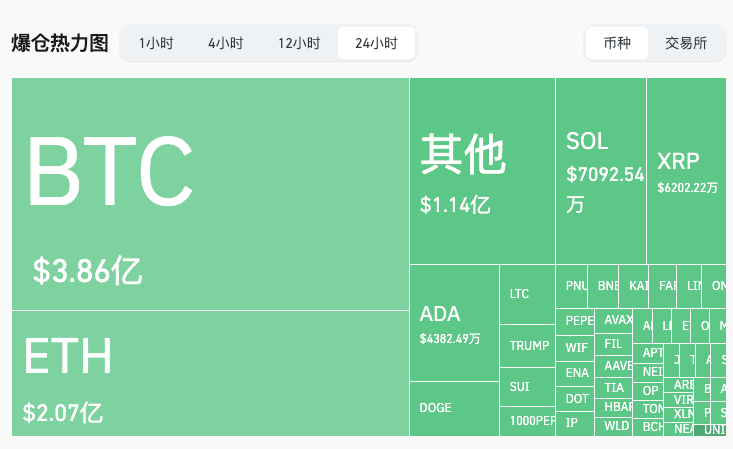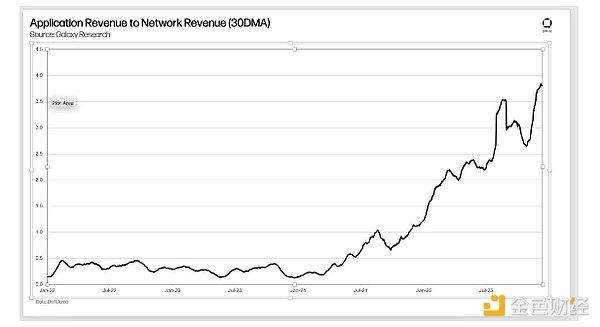Author: ChandlerZ, Foresight News
From the late evening of March 3 to the morning of March 4, against the backdrop of gloomy global macroeconomic conditions, Trump's announcement to include cryptocurrency assets in the U.S. strategic reserve failed to reverse the overall market downturn. Trump's announcement to include cryptocurrency assets in the strategic reserve briefly sparked market euphoria, but it soon subsided. Bitcoin, after a brief surge, fell 13% at one point, almost completely erasing its gains; Ethereum, after soaring to $2,550, fell to around $2,000, even breaking through recent lows. Other tokens that had previously led the rally, such as SOL, also gave back most of their gains.
At the same time, the three major U.S. stock indexes also fell sharply, with the S&P 500 index down 1.76%, the Nasdaq down 2.64%, and the Dow Jones index turning from a near 200-point gain to a plunge of over 600 points. Technology stocks, as representatives of risk assets, have borne the brunt of the sell-off, with Nvidia's stock price plummeting nearly 9%, and the Magnificent 7 index of the seven largest U.S. tech giants falling 3.45%. Capital has quickly fled from high-risk assets and shifted to traditional safe-haven assets, forming a typical risk-averse trading pattern.

CoinMarketCap data shows that the total market capitalization of cryptocurrency assets has once again fallen below $3 trillion, hitting a new low since November 2024. The scale of derivatives market liquidation has expanded significantly, with Coinglass statistics showing that the 24-hour network-wide liquidation amount reached $1.068 billion, of which $38.6 million in Bitcoin contracts and $20.7 million in Ethereum contracts were liquidated.
Tariff turmoil triggers market panic
Trump reiterated that he will impose a 25% tariff on Canada and Mexico starting March 4, and explicitly stated that "there is no room for negotiation." Trump also mentioned that from April 2, countries that impose tariffs on U.S. products will face retaliatory tariffs of the same magnitude. Canada has already prepared to impose retaliatory tariffs on $155 billion worth of U.S. goods.
The U.S. economy is currently facing a rare macroeconomic vulnerability. The Atlanta Fed's GDPNow model has sharply revised its first-quarter GDP contraction forecast from 1.5% to 2.8%, a near doubling that far exceeds the normal range of economic forecast revisions, indicating that the economic fundamentals are deteriorating rapidly. At the same time, manufacturing activity is almost stagnant, while raw material price indicators have hit new two-year highs, forming a typical prelude to stagflation. This combination of stagnant economic growth and inflationary pressure has always been the nightmare of macroeconomic policymakers, as it undermines the effectiveness of conventional monetary policy tools. Against this backdrop, Bridgewater founder Dalio has warned that if the U.S. does not reduce its deficit, it will face a debt crisis within three years.
U.S. suspends military aid to Ukraine, adding to uncertainty
According to a report by Xinhua News Agency citing U.S. media, Trump has ordered the suspension of all military aid to Ukraine until the Ukrainian leadership demonstrates "sincerity in reaching a Russia-Ukraine peace agreement."
This decision came after a heated argument between Trump and Zelensky in the Oval Office. The Wall Street Journal reported that the Trump administration has stopped providing funding for new weapons sales to Ukraine and is considering freezing weapons shipments from U.S. inventories, which could seriously impact Ukraine's fighting capabilities against the Russian military at a critical moment.
To address the U.S. policy change, European leaders have agreed at the London Summit to form a "Volunteer Alliance" to formulate a Ukraine peace plan to be submitted to Trump, which will include the provision of ground troops and military assets. The UK has also announced a new military aid package, including £1.6 billion for air defense missile procurement support and a £2.26 billion defense loan agreement.
This policy shift may signal a fundamental change in U.S. policy toward Ukraine and a potential restructuring of the international security landscape, raising market expectations of an escalation of geopolitical conflicts, prompting investors to withdraw from U.S. stocks and cryptocurrency assets, which are considered risky assets, and seek safe-haven assets, leading to a simultaneous decline in these two markets.
At the same time, this change in the security landscape suggests that traditional macroeconomic crises may be intertwined with international political risks, forming a multi-layered risk system. The U.S. decision to suspend military aid to Ukraine may trigger more defensive measures in the region, and the resulting political and economic uncertainties will further impact the global financial markets. Faced with a deteriorating external environment, investors find it difficult to determine which asset class can better hedge against risks, and thus choose to wait and see, leading to a further decline in market liquidity and exacerbating the synchronized decline in U.S. stocks and the cryptocurrency market.
A critical juncture for the market
The current market is at a critical juncture where multiple policy storms and uncertainties are intertwined. Under the influence of the tariff turmoil and the U.S. suspension of military aid to Ukraine, investors' expectations of global risks have risen significantly. This expectation has spawned a risk-averse sentiment, leading to a synchronized decline in traditional risk assets such as U.S. stocks and cryptocurrency assets, severely damaging market confidence. At the same time, the escalation of geopolitical tensions has raised doubts about the macroeconomic outlook, suppressing market liquidity, and causing risk premiums to rise, casting a shadow over the short-term outlook for the cryptocurrency market.
Against this backdrop, the future trend of the cryptocurrency market has multiple possibilities. On the one hand, the U.S. is set to hold its first cryptocurrency asset summit on March 7, and Trump's speech and further elaboration on the national strategic Bitcoin reserve plan may reignite market enthusiasm and provide positive signals for some cryptocurrency assets. On the other hand, Trump's concept of a "national strategic Bitcoin reserve" introduced last year, while attracting attention, remains unclear in terms of how the U.S. government will implement it specifically, and its internal logic and operability are still widely questioned. If the U.S. adopts a model of establishing reserves by retaining Bitcoin from confiscated assets in the future, its support for the market may gradually emerge, but whether this model can balance political manipulation and the organic development of the market still needs to be observed in terms of policy details and implementation strength.
Overall, the future trend of the cryptocurrency market will seek a balance between policy shifts, international security situations, and the global macroeconomic environment. In the medium to long term, if the global economic situation stabilizes and policies are implemented with a clear direction, cryptocurrency assets may gradually recover from the current volatility. However, at the current stage, the market still faces high uncertainty, with risk premiums and volatility remaining at high levels.







